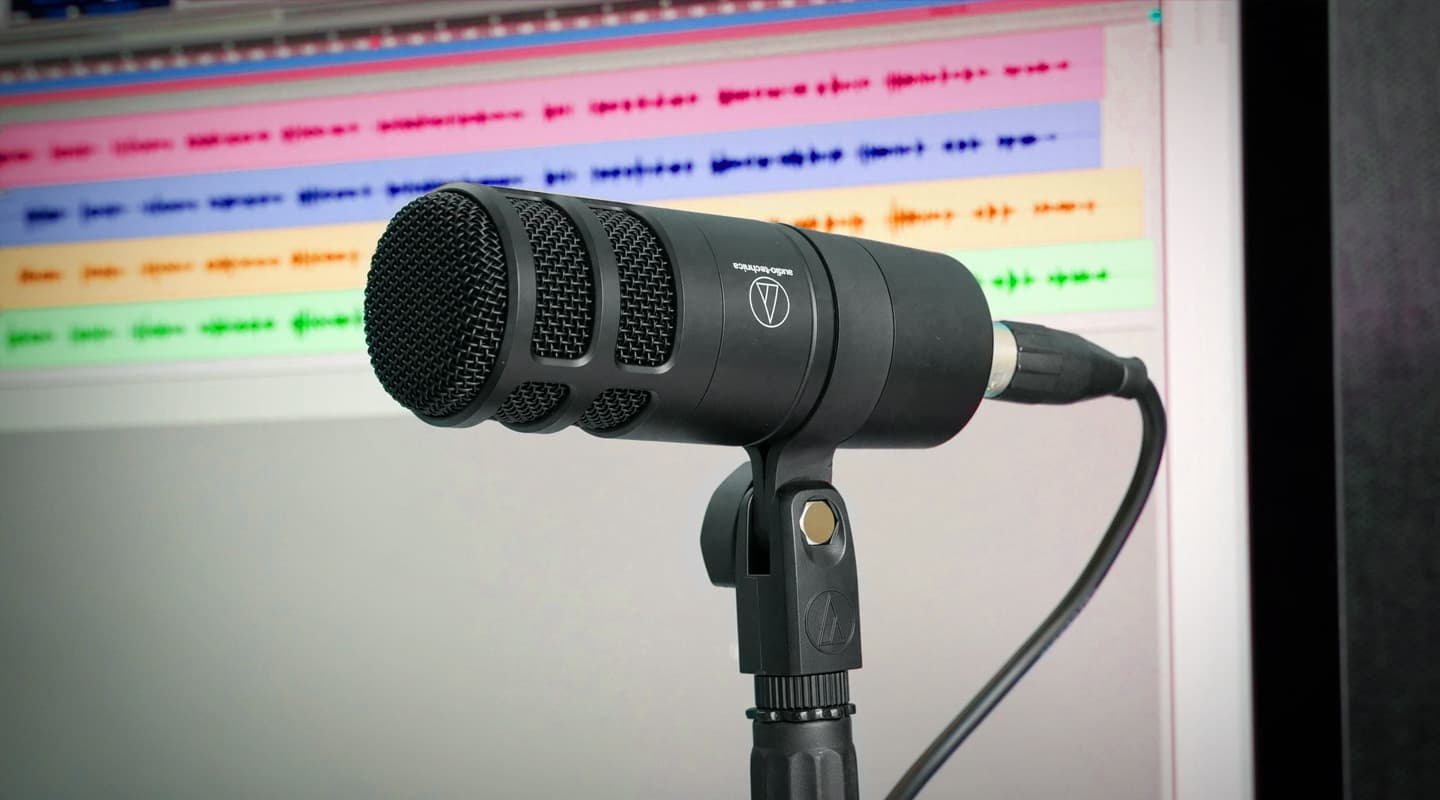
Review: Audio-Technica AT2040
Audio-Technica woos podcasters with its first dynamic microphone in the successful budget friendly 20 Series.
Audio-Technica is no stranger to the budget conscious home studio scene. One of the most ubiquitous budget condensers in any enthusiast’s mic drawer would have to be the AT2020.
After a long while we finally see a new microphone come from Audio-Technica’s direction and it’s in this same category of competitively-priced mics aimed at a value-hungry audience.
Although this time the target is a fledgling market of a different kind — podcasting.
And, no; podcasting isn’t exactly a fledgling market any more. Audio-Technica was just a bit late to the party. (Notwithstanding the early-2020 release of the Audio-Technica Creator Pack based on the ATR2500x-USB side-address condenser mic.)
Of all the products a brand like Audio-Technica could choose to develop, a hypercardioid, end-address, dynamic vocal mic is a fitting choice. I imagine Google clocks up a horde of searches for ‘affordable podcast microphone’ everyday. Why leave all the fun to Røde, Shure, Heil, MXL, PreSonus and the many other mic brands capitalising on this blooming vertical?
The AT2040 is the first dynamic microphone in the 20 Series. And as for brand awareness, it has the respected Audio-Technica name going for it when it shows up on a budding podcaster’s Google search results. Let’s not forget Audio-Technica already has a solid presence in the broadcast world thanks to mics like the BP40.
A SOUND RESULT
Let’s open the box. The AT2040 is a smart-looking unit with a compact design that somewhat resembles a kick drum mic. Its small size belies its heft which comes in at 615g. Audio-Technica states a frequency response of 80Hz–16kHz for the AT2040, and an open circuit sensitivity of -53dB (2.2mV). The mic is 145mm long and 52mm wide. Output connection is, of course, via XLR.
When testing a podcast-style microphone on a voice, I try to listen for a natural, inoffensive tone that conveys a sense of being in the room with the presenter.
The AT2040 certainly has this quality. It does that lovely dynamic microphone thing to a voice where it rounds out rough edges and tapers the highs to give a smooth and flattering overall tone. Don’t expect a condenser-like sizzle or high broadband fidelity (as mentioned, the stated frequency response extends up to 16kHz) – it’s not designed for that. The mic zeroes in on the vocal frequencies area, accentuating low-mid warmth and presence without getting too nasal or thin.
On occasion I did notice the mic is a little too mid-heavy and honky for my liking. Proximity effect is pronounced if you’re up against the grille but cleans up nicely 5-10cm away. Pulling a healthy level required less preamp gain than other similar dynamic mics so keep the Cloudlifter in the cupboard.
NEED TO KNOW
AUDIO-TECHNICA AT2040
Dynamic Podcasting Microphone
The AT2040’s absence of airiness combined with ‘lips on the grille’ proximity effect can be just the ticket to fatten up a thin voice and draw attention on the mid frequencies. On a mellow and deep voice, a 3-6dB high shelf boost opened up the top end beautifully with no ill side effects of sibilance or self noise. When I compared the AT2040 with a few other budget dynamic mics aimed at podcasting, those mids do come across strident at times while the low end left a little to be desired. As I mentioned before, careful placement can address the latter. Lesson of the day: know the mic well enough to match it to the right voice, at the right distance, and it’ll shine.
Perhaps my biggest surprise of the AT2040’s performance was the way it tames plosives. Unscrew the head basket and you’ll see a few different layers of foam mesh behind the metal grille which do a sterling job stopping pops and booms even when your mouth is up against the mic. Other podcast mics I’ve tested haven’t performed particularly well in the area of plosive management, which only added to my delight when it became clear the AT2040 would require no extra pop shield for instantly usable results.
Audio-Technica says the AT2040 has integrated shockmounting but it doesn’t do a whole lot to be honest. Any physical interaction with the mic is well and truly audible in a recording, so your best bet is to grab a full elastic shockmount, or just don’t touch it when the red button is flashing.

NOISE REJECTION
A major benefit of dynamic and highly directional microphones in a podcasting context is their ability to reject noise and forgive untreated rooms. The AT2040 is an ideal mic to use if your environment is acoustically unflattering because it simply won’t hear the ugly stuff as much. Speaking into the mic 45° off axis results in a noticeable decreasing of low end, and by the time you get to 180° off mic, a voice is hugely attenuated — which gives you an idea of what’s happening to unwanted room reflections trying to inveigle their way into your recording/broadcast.
What was interesting to me is how much high end remained, even completely off axis. In a podcasting situation with another presenter directly across from you, this could result in their inevitable bleed competing with your voice more than you expect. But in all likelihood this will only be an issue if you’re in a very small untreated room, or you speak 10 times softer than your co-presenter.
All things considered, the Audio-Technica AT2040 is a well thought out addition to the brand’s arsenal and completely aligns with Audio-Technica’s reputation of designing high quality microphones with a home studio-friendly price tag. The AT2040 itself promises a huge step up in quality for any podcaster or gamer who’s still using a cheap USB or headset mic. The preamps in a basic interface will easily gain it up and it plays nicely with a touch of post processing. For a podcaster, voiceover talent, YouTuber, Twitch streamer, or anyone looking for an affordable way to improve the reproduction of spoken word, the AT2040 is an excellent option.

























I like the Audio-Technica AT2040. It’s a great microphone for podcasts, voice-over recording and video calls. And the most important thing is the affordable price for such good quality.
Great to hear Mike!